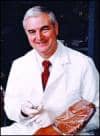
James Broadbent, DDS, MS, Provo, Utah
One of the most helpful clinic-management tools for me was to set up a clinical-procedure tray system. We reviewed our appointment calendar and determined what procedures we routinely perform. We then identified how many procedures of each type we performed on a daily basis. Next, we determined the instruments needed for each procedure tray. With the aim of setting up fewer types of trays, we identified procedures that use the same tools. We reviewed our protocols and added one or two instruments so that, whenever possible, one tray may cover more than one procedure. We planned a sufficient number of trays to cover our busiest half-day schedule.
Next, we planned an instrument-sterilization/disinfection and waste-management-processing system to meet or exceed state and federal sterilization guidelines in the dental office. The system is designed to use bags, wraps, or cassettes. Our aim was minimal instrument handling and reduction of staff time required to process our instruments. The procedure-tray processing area is adjacent to the patient care area, so few steps are involved in treating patients. Disposable products are stored in the cabinets and added to the tray setup.
This system has proven to be both effective and efficient. We spend much less time preparing, and we have what is needed for each chairside procedure.

Barry Glassman, DDS, Allentown, Pa
Ever treat a patient with a significant bruxism habit or one that develops headaches after removal of their fixed appliances? Why not consider the addition of a discluding element that is attached to the retainers that they wear at night? 

Jerry R. Clark, DDS, MS, Greensboro, NC
Many doctors are now using smaller, more flexible wires for their initial archwires. One of the problems with these wires is that they sometimes tend to creep in the bracket, and as a result they can come out of the molar brackets and can potentially stick patients, particularly if the doctor is banding or bonding second molars, as we do in our office. What we do to eliminate this problem is that we end our initial .014 archwires distal to the first molars and bend the ends under to prevent creep and sticking. In our second, heavier archwires, we then pick up the second molars and engage them. This has reduced significantly the number of problems with our initial archwires.




